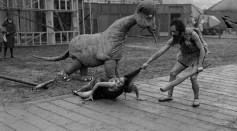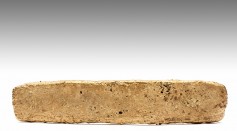anthropology

Remains of 9 Neanderthals Found Near Rome, Offering Insights on Prehistoric Population
Study Suggests Thumbs Helped Evolution Two Million Years Ago

Mystery of the Gold Bar in Mexico City Solved: Researchers Traced the Age of the Gold Bar Back to Noche Triste

From Lucy to Lola: Human Evolution Has Gone A Long Way and So Is Our Understanding of Our Origins
Move Over, Carbon Dating… Plastics Could Potentially Determine the Age of Fossils
A Cornucopia of Fossils Reveals the End for Dinosaurs
He Said, She Said: Actually, Both Say, When it Comes to Where Hunter-Gatherers Live
Egyptian Mummified Animals Contain Hidden Surprises
Self-Mummified Monk Found in 1000-Year-Old Buddha Statue
Ancient Man May Have Been More Tactile Than We Thought—Stone-Age Brains & Modern-Day Hands
Researchers in Scottland Find Remnants of Nessy’s Relatives—Or So It Seems
Demystifying Archaic 1500 Year Old Palindromic Amulet
New Research Reveals the Life and Death on Easter Island
Polish “Vampires” Discovered in Crypts, and They May Have Had Cholera
Most Popular

How Technology Is Changing the Real Estate Industry?

How a Plant-Based Diet Can Protect Against Breast Cancer: Insights from Nutrition Research

Study Reveals High Turnover in Scientific Research Careers: What This Means for Future Scientists

Why It's So Difficult to Lose Weight: The Biological Explanation Behind Obesity






